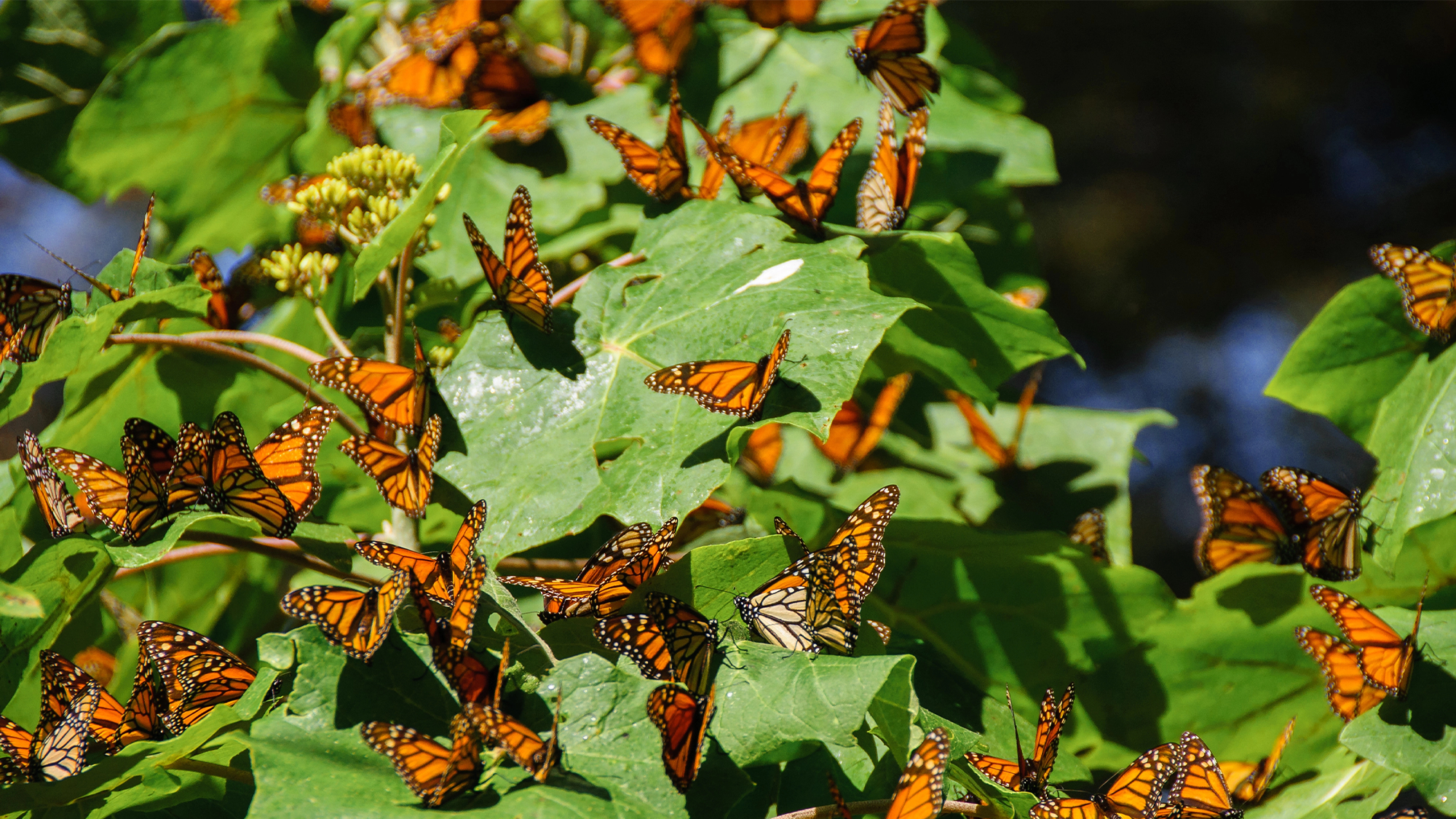
Monarch butterflies are among the planet’s power migrators. Every autumn, a new generation of the orange and black insects are born in the northern United States and southern Canada. They then take to the skies and fly to the mountains of Central Mexico, between 2,485 and 2,982 miles away. In an effort to help this grueling migration, a team of scientists has planted new overwintering sites along the slopes of a Mexican volcano. The experimental technique is described in a study published October 18 in the journal Frontiers in Forests and Global Change.
[Related: How to plant a garden butterflies will love.]
The butterflies overwinter in the forests of the sacred fir trees (Abies religiosa) at high altitudes. However, these forests that the monarchs need to survive their migration are at risk due to climate change. The trees are predicted to slowly move up the slopes. Scientists estimate that by about 2090 they will run out of space to grow. Creating new forests on the higher mountains further to the east and outside of the insects’ current geographic range could be a solution.
“Here, we show the feasibility of planting new sacred fir forests on a nearby volcano, Nevado de Toluca, at altitudes between 3,400 and 4,000 meters [11,154 and 13,123 feet],” Cuauhtémoc Sáenz-Romero, a study co-author and biologist Universidad Michoacana de San Nicolás de Hidalgo in Mexico, said in a statement. “We call this ‘assisted migration’: planting seedlings grown from seeds from existing sacred fir populations to new sites whose climate by 2060 is predicted to become similar to that at today’s overwintering sites due to global warming.”

In 2017, the team from this study gathered seeds from cones from eight strands of sacred fir in Mexico’s Monarch Butterfly Biosphere Reserve (MBBR). These trees grow at altitudes between 10,170 and 11,482 feet. For the first two years, they grew the seedlings in a shade-house at 6,233 feet altitude. They then grew them at a nursery at 9,842 feet.
In July 2021, the team transplanted the seedlings to four sites on the northeast slope of the Nevado de Toluca volcano. They picked Nevado de Toluca because it is the closest mountain to the MBBR geographically, but its summit is about 3,707 feet higher than the butterfly reserve and is a Protected Natural Area.
[Related: Monarch butterflies’ signature color patterns could inspire better drone design.]
The seedlings were planted at four altitudes–11,154, 11,811, 12,467, and 13,123 feet. The latter elevation is the timberline of Nevado de Toluca and was included so that the team could find the highest elevation at which sacred firs can survive in today’s climate. Every two months between September 2021 and December 2023, the team measured each seedling’s performance, namely its survival, height, and diameter.

Researchers found that the performance survival and growth worsened when seedlings were transplanted to sites that were colder and higher than the original stand in the MBBR. At the highest altitude of 13,123 feet, the growth was approximately nil and many seedlings showed frost damage. However, between 11,811 and 12,467 feet, the seedlings had 54 percent less vertical growth, 27 percent less biomass, and 27 percent less survival than at the baseline of 11,154 feet. According to the authors, this survival is “very acceptable.”
“These planted stands could ultimately serve as overwintering sites for the monarch butterfly under warmer climates,” concluded Sáenz-Romero. “In fact, monarch butterflies have over recent years established new and large colonies at colder places within the Nevado de Toluca, which suggests that they already are searching for new places to overwinter, as their historic sites inside the MBBR are now too warm. Once our seedlings are fully grown, they will hopefully discover our planting site, too.”



